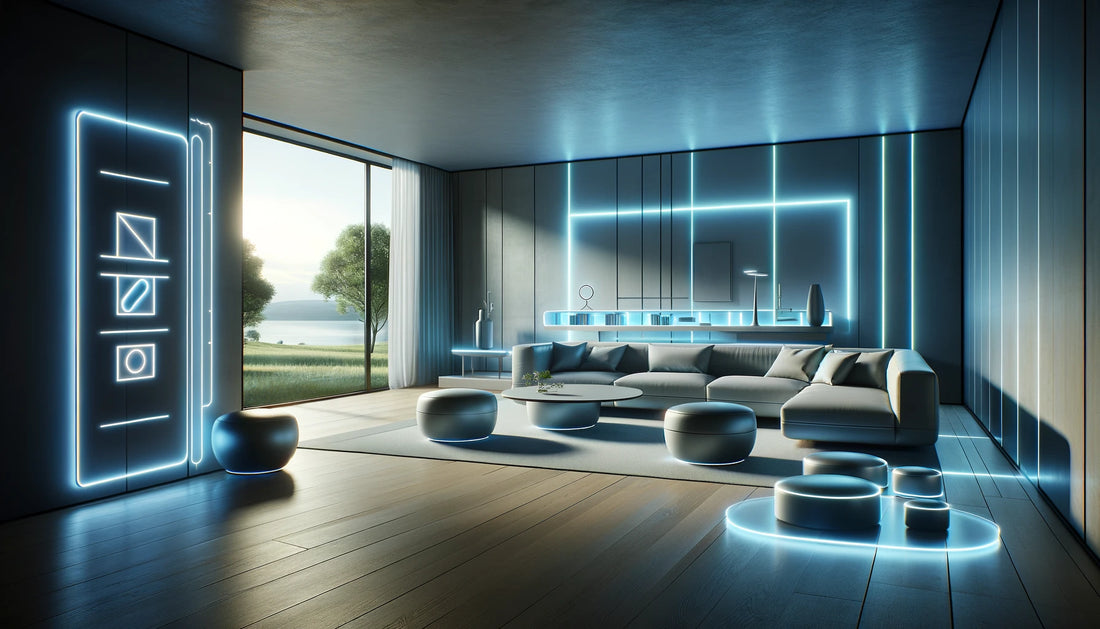In the tapestry of tomorrow’s homes, technology weaves a narrative rich with innovation and sophistication. As we embark on this journey, interior design stands at the cusp of a new era, transformed by the magic of technological advancements. This blog post explores the future of interior design, highlighting how technology is set to revolutionize our living spaces, making them smarter, more efficient, and a true reflection of our personal style.
The Dawn of Smart Homes: Living Spaces That Listen and Learn
Imagine walking into a home that responds to your presence, adjusting lighting, temperature, and even playing your favorite music without a single word spoken. Smart homes are becoming a reality, with integrated systems that offer unprecedented control over the environment. The future holds homes that not only listen but also learn from our habits and preferences, creating spaces that adapt to our needs with minimal input.
AI-Driven Design: Tailoring Spaces to Your Taste
Gone are the days of one-size-fits-all design solutions. The future belongs to AI-driven design tools that can create personalized living spaces. These tools analyze your preferences, lifestyle, and even the art you love, suggesting design elements that perfectly match your taste. This means your home will not only be a place to live but a reflection of your personality, curated by advanced algorithms.
Virtual Reality (VR) and Augmented Reality (AR): Visualizing the Future Before It Happens
Choosing the right furniture or deciding on a layout can be daunting. Enter VR and AR, technologies that allow you to visualize changes before making them. With a VR headset, you can walk through your redesigned home, experiencing different layouts and design options. AR takes it a step further, letting you see how new furniture looks in your actual space with just a tablet or smartphone. This blend of reality and digital imagination helps make informed decisions, ensuring your home is exactly as you envision it.
Sustainable Tech: Greening Our Spaces
Sustainability is not just a trend; it’s a necessity. Future interior design will leverage technology to create eco-friendly homes that minimize environmental impact. From materials that reduce carbon footprints to furniture that purifies the air, technology will play a key role in greening our spaces. Smart systems will manage energy consumption efficiently, ensuring our homes are not only beautiful but also guardians of the planet.
The Rise of Multifunctional and Transformative Furniture
Space is at a premium, and the future of interior design recognizes this challenge. Technological advancements are paving the way for multifunctional and transformative furniture. Think beds that disappear into ceilings, desks that convert into dining tables, or sofas that can change shape to suit different occasions. This innovative furniture not only saves space but also adds a layer of interactivity and fun to our homes.
Conclusion: A New Horizon for Interior Design
As we look toward the future, it’s clear that technology will redefine the essence of interior design. Our living spaces will become more than just places to dwell; they will be smart, sustainable, and deeply personal sanctuaries that enhance our quality of life in ways we can only begin to imagine. The journey into the future of interior design is an exciting one, filled with possibilities that promise to transform our homes into spaces that truly understand and respond to our needs.
In this brave new world, the line between technology and design blurs, creating a future where our homes are not just places to live, but expressions of our deepest desires and dreams. As we embrace these technological advancements, we open the door to a future where interior design transcends traditional boundaries, creating spaces that are not just functional but are true works of art.
FAQs:
• What are smart homes?
Smart homes utilize integrated technology systems to automate and enhance various home functions, including lighting, temperature, security, and entertainment, based on the residents’ preferences and behaviors.
• How does AI contribute to interior design?
AI can analyze personal preferences and lifestyle data to suggest customized design elements, ensuring that a space not only meets functional needs but also reflects the individual’s personality.
• What is the role of VR and AR in interior design?
VR allows individuals to immerse themselves in virtual representations of their homes, exploring different designs and layouts. AR overlays digital images onto the real world, helping visualize how new items would look in an existing space.
• Why is sustainable technology important in interior design?
Sustainable technology reduces the environmental impact of homes through energy-efficient systems and eco-friendly materials, contributing to a healthier planet.
• What makes furniture multifunctional or transformative?
Such furniture can change form or function to meet different needs, optimizing space usage and adding versatility to living areas.
The exploration of technology in interior design is not just about the latest gadgets but about creating homes that enrich our lives. As we venture further into the future, these technological advancements promise to bring about a revolution in the way we live, blending form, function, and sustainability in exciting new ways.
